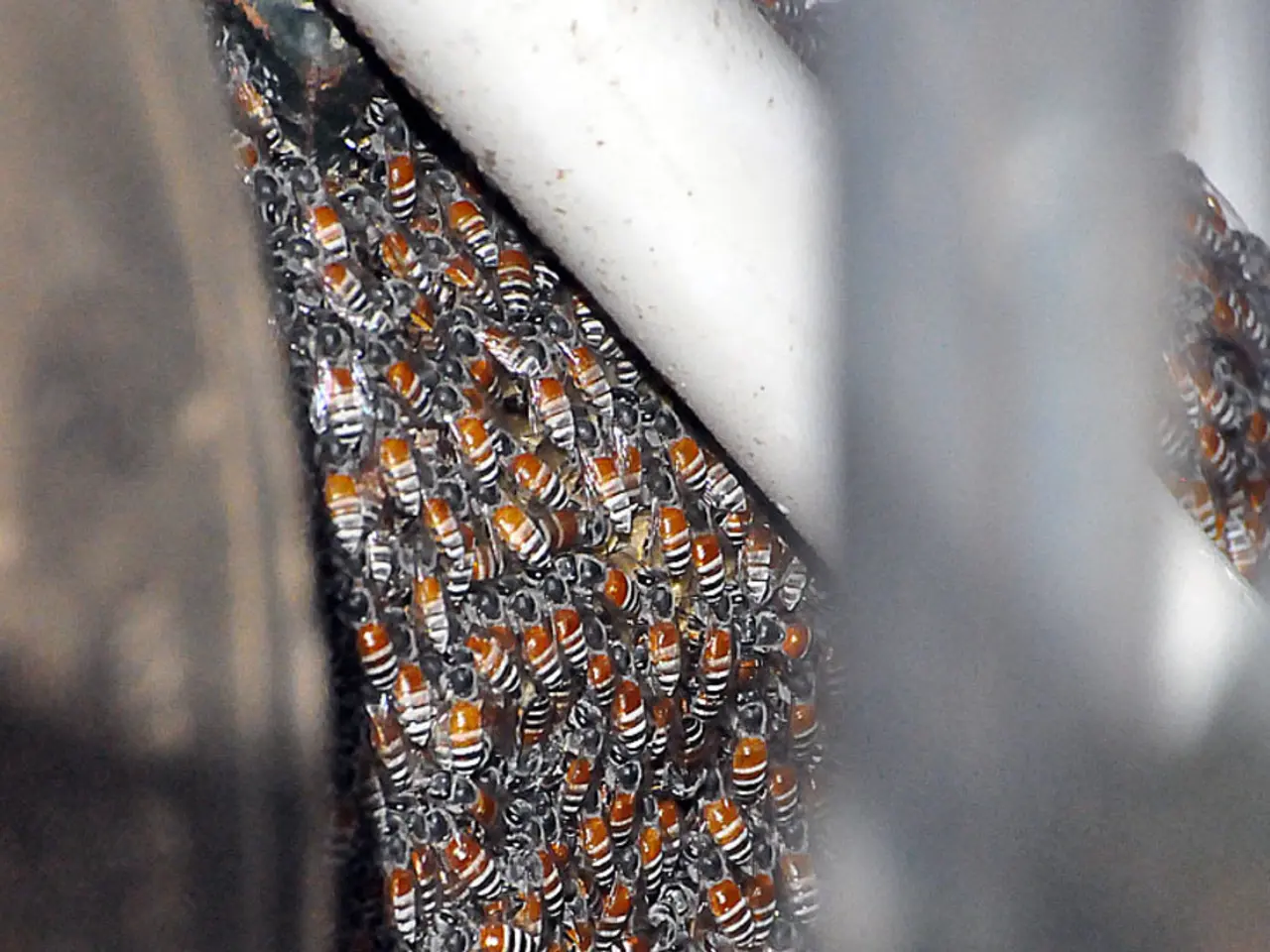Exploring the Science of Romance: Unveiling the Secrets of Profound Human Bonding
In the realm of digital content, Sneha Iyer stands out as a beacon of positivity. As a Digital Marketing Professional, Content Writer, and Artist, her work on various platforms focuses on uplifting stories, insights, and practical tips to encourage small daily acts of kindness. Her writing helps readers find joy in giving and meaning in the everyday, often framing love as a transformative force that can make the world a better place.
Recently, Iyer has been delving into the science of love, exploring the complex neurochemical dance that shapes our romantic behaviors and emotional states. According to a study on her website, quality time, words of affirmation, and physical affection are the top three ways people feel love, with 82%, 81%, and 78% of participants, respectively, expressing these as their primary methods.
The study also found that expressing love leads to feelings of deep connection (81%), fulfillment (75%), and gratitude (71%) for the person expressing it. The science of love significantly influences our brain chemistry and overall well-being through the interaction of key hormones and neurotransmitters involved in romantic attraction, attachment, and bonding.
Dopamine, often called the "pleasure molecule," is central to reward processing in the brain. It is released in response to novel, exciting, or pleasurable stimuli, such as meeting a new romantic partner. Elevated dopamine levels produce feelings of pleasure, motivation, and intense attraction, driving the desire for union with the loved one.
Serotonin regulates mood, appetite, and sleep. During the initial phase of romantic love, serotonin levels typically drop, resulting in obsessive thoughts and compulsive behaviors focused on the romantic partner. As attachment deepens, serotonin levels tend to normalize, helping reduce obsessive thinking and stabilizing mood.
Oxytocin, sometimes called the "bonding hormone," and endogenous opioids contribute to the feeling of closeness and attachment in longer-term pair bonding. Oxytocin is linked to social bonding, trust, and the reduction of stress, reinforcing emotional connection and attachment beyond the passionate early stages of love.
The interplay of these neurochemicals orchestrates the experience of romantic love, transitioning from intense attraction and craving in early stages to deeper attachment and emotional bonding over time. This balance directly impacts emotional well-being, enhancing happiness, reducing stress, and fostering resilience through social connection.
Regarding the importance of everyday actions in nurturing and spreading love, these neurochemical systems are responsive to ongoing social behaviors, including showing consistent presence and emotional support, engaging in thoughtful, affectionate interactions, and being mindful and empathetic during hormonal fluctuations.
Iyer's work also extends to topics such as lifestyle, creativity, and community impact. In line with her focus on love and kindness, she has recently launched the #all4Love campaign, which aims to create a ripple effect of positivity and connection. The campaign encourages people to consciously share love, with options to post a picture or video using the hashtag, write a love letter, or encourage others to participate.
In this digital age, it's more important than ever to remember the power of love and kindness in our daily lives. Sneha Iyer's work serves as a reminder that small acts of love can have a profound impact on our emotional well-being and the world around us.
- Sneha Iyer's work on digital platforms emphasizes uplifting stories and practical tips to inspire small acts of kindness, promoting a sense of community.
- Iyer's focus on love as a transformative force shows the potential for happiness and meaningful change, particularly among the youth in our community.
- The study on Sneha Iyer's website highlights the importance of quality time, words of affirmation, and physical affection in expressing love, affecting people's feelings of deep connection, fulfillment, and gratitude.
- According to the science of love, key hormones and neurotransmitters like dopamine, serotonin, oxytocin, and endogenous opioids shape our romantic behaviors and emotional states, leading to happiness and reducing stress.
- Hormones such as dopamine create feelings of pleasure, motivation, and intense attraction, arguing that love can make the world a better place through alterations in our brain chemistry.
- As attachment deepens in romantic relationships, serotonin levels normalize, helping reduce obsessive thinking and stabilizing mood.
- Oxytocin, the "bonding hormone," and endogenous opioids contribute to feelings of closeness and attachment, reinforcing emotional connection and attachment in long-term pair bonding.
- Sneha Iyer's work encompasses various topics, including health-and-wellness, lifestyle, and fashion-and-beauty, all emphasizing the importance of love, kindness, and gratitude.
- Iyer's #all4Love campaign, which promotes conscious sharing of love and encourages positive connections, has the potential to create a ripple effect of happiness and impact the world for the better.
- In this digital age, Iyer's work serves as a reminder that our daily actions, driven by love and kindness, can have a profound impact on our emotional well-being and the people around us.
- Love and kindness can be found in various aspects of pop-culture and social media, offering opportunities for self-expression, connection, and emotional healing.




